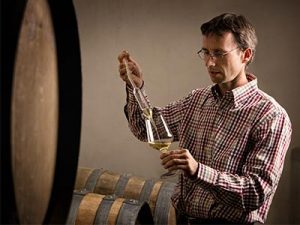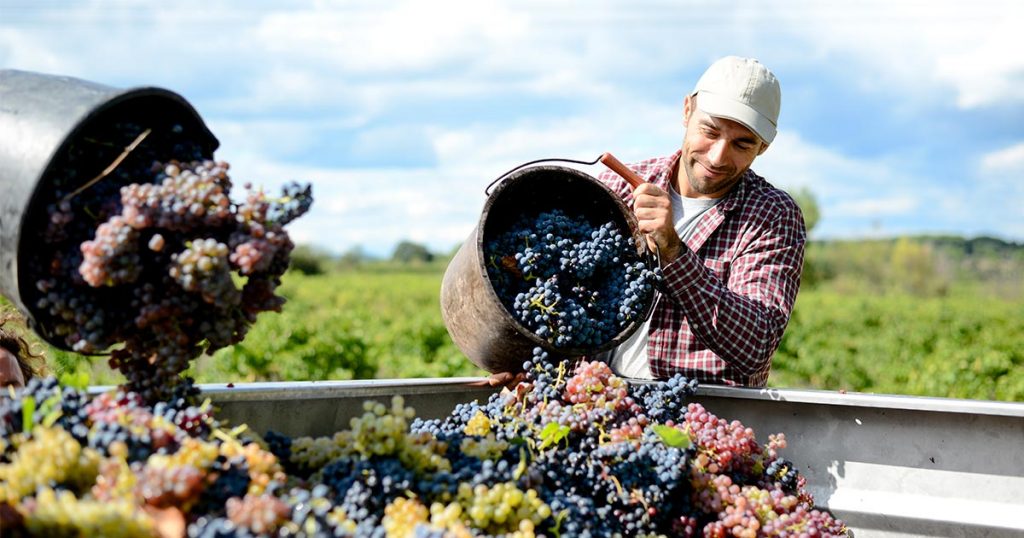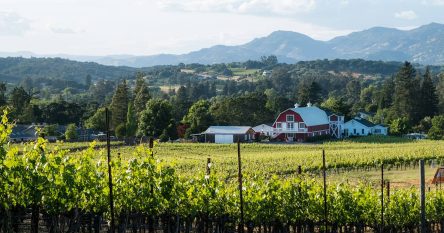We’ve all been concerned to see animals silhouetted against smoke and flames, fleeing wildfire in my native Australia. The devastating scenes have drawn attention to the impact of climate change on a global scale. We’ve seen communities near Napa Valley devastated by wildfire as well, but fire is not the only threat to the valley’s elite wineries and heritage. U.C. Davis’ viticulturist S. Kaan Kurtural, who is working to develop climate-resilient vines with Beckstoffer Vineyards, said that the ways that climate has affected wine growing in recent years have “shocked” him.
“Anyone who farms anything has known that the climate has been shifting for a while, but now there’s an economic necessity to take action,” Mr. Kurtural told a USA Today reporter. Consideration of the purchase of a winery and significant agricultural property in Napa Valley should now include an awareness of the effects of climate change, from potential lengthy service interruptions from Pacific Gas and Electric requiring back-up power solutions to the way that climate change is affecting production of some of Napa Valley’s iconic wines, especially Cabernet Sauvignon.
How are Napa Valley Winemakers Responding to Climate Change?
 Molly Moran Williams, the community relations director for our Napa Valley Grapegrowers’ association, said that winemakers had been interested in agricultural permanence for many years. The association uses the term “climate resilience” to describe the efforts members are taking to adapt to the changing climate and its diverse impacts.
Molly Moran Williams, the community relations director for our Napa Valley Grapegrowers’ association, said that winemakers had been interested in agricultural permanence for many years. The association uses the term “climate resilience” to describe the efforts members are taking to adapt to the changing climate and its diverse impacts.
Napa Valley Winemakers are independent thinkers, and we do see a number of approaches to climate impacts on our vineyards throughout the region. Molly Williams said that “grape growing is always a practice in foresight.” Napa Valley Grapegrowers currently urges its members to compost vine cuttings; the previous practice had been to burn them — adding carbon to the atmosphere. Composting not only creates less air pollution, but it can also even sequester carbon. This common-sense step benefits wineries and the environment, but alone, it can’t make enough of an impact on changing climate patterns and environmental threats.
Climate change is the correct term for the environmental challenges we face in Napa Valley. “The big deal is the erratic nature that we have with climate,” Andy Beckstoffer of Beckstoffer Vineyards told CBS News. Andy is making a significant investment in a partnership with U.C. Davis and working with Kaan Kurtural on a Cabernet Sauvignon rootstock and clone experimental planting trial. Beckstoffer sees this as an opportunity to preserve the quality of Cabernet Sauvignon, one of our two most renowned Napa Valley wine varieties. The idea is to develop ways to protect Cabernet Sauvignon vines and use different planting techniques, including vertical plantings. One hundred combinations of planting, shading, and other technology are being tested — and it’s not a short-term project. It will take at least six years to determine which methods and rootstocks are preferable. Without initiatives like this and continued climate change, within 20 to 30 years, it’s possible that Cabernet grapes could no longer be viable in Napa Valley.
Beyond the initiatives of the 700-member Napa Valley Grapegrowers’ association and owner-sponsored trials like Andy Beckstoffer’s, the 500-member Napa Valley Vintners association have formalized environmental sustainability in an initiative they have developed for nearly two decades, Napa Green.
What is the Role of Napa Green For the Napa Valley Winemaker?
Napa Valley Vintners launched Napa Green in the early 2000s and the initiative has grown since that time. If you’re considering buying a wine property in Napa Valley, you may want to investigate the approaches that the Napa Green program has taken regarding climate change, which focuses on conservation and stewardship. Napa Green offers third-party certification in environmental sustainability for land management practices and also in winemaking. You may hear Napa Green’s education and certification program described as “soil to bottle” sustainability.
The Napa Green initiative has set a goal of having 100% of the Napa Valley Vintner’s association members becoming Napa Green Land or Winery Certified by the end of 2020. As of December 2019, 70% of the association’s members were certified in one or both certifications. At present, about 26,000 acres of Napa Valley vineyard land is Napa Green Land certified, and 50 of our Napa Valley wineries are comprehensively Napa Green certified from “soil to bottle.”
If you’re interested in learning more about Napa Green’s environmentally sustainable methods and how wineries use them, five of our wineries have been awarded the California Sustainable Winegrowing Green Medal award:
- Spottswoode Winery
- St. Supery Estate Vineyards & Winery
- Cakebread Cellars
- Silver Oak Cellars
- Domaine Carneros
What Climate Change Impacts Are Of Greatest Concern For Napa Valley Properties?
Napa Valley’s average annual temperatures have increased 1.3 degrees Celsius since the late 1800s, about .3 degrees C more than the U.S. average. The region’s best-known and loved varietals, especially Cabernet Sauvignon, are sensitive to temperature change. When the heat rises in the Valley, the internal temperature of grapes can rise above 150 degrees, devastating the slow maturation and ripening of the grape which produces Napa Valley’s world-renowned fine wines.
“I have to plan ahead in a way I never thought I’d have to,” said Beth Novak Milliken of Spottswoode Estates and Winery. Milliken is a leader in Napa Valley’s sustainable winemaking movement and her Spottswoode Estate Cabernet Sauvignon is offered for $90 to $225 a bottle. High temperatures in 2017 put Spottswoode Estates and Winery vineyards into stasis according to Milliken’s winemaker and vineyard manager Aron Weinkauf. The event was unheard-of, leading to a variety of new procedures in the vineyards to prevent another “stasis” year. Spottswoode’s vineyards are now extensively shaded and include new cover crops that can protect vines in case of flooding or another dry period. Spottswoode (and other wineries) are planting experimental rootstocks that can thrive in higher temperatures.
Few people in Napa Valley are debating whether climate change is real or when it will happen. Politics isn’t on the table, but uncovering and developing realistic solutions are. Beth Milliken echoed the sentiment of most long-time winemakers in Napa Valley when she said, “climate change is here.”
Looking to be a Winemaker in Napa Valley?
Fortunately, if you are interested in an elite vineyard or winery in Napa Valley, you will join a community of vintners and owners who have been developing solutions for our wine growing and climate challenges for decades, and who are committed to continuing the wine legacy of Napa Valley for many decades to come.




